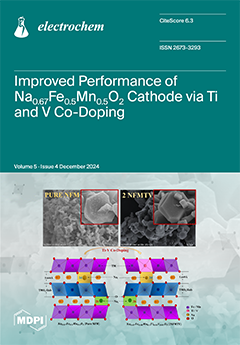For the first time, nitrogen- and carbon-present tin dioxide-supported palladium composite catalysts (denoted as Pd/N-C-SnO
2) were prepared via an HCH method (HCH is the abbreviation for the hydrothermal process–calcination–hydrothermal process preparation process). In this work, firstly, three catalyst carriers (denoted as
[...] Read more.
For the first time, nitrogen- and carbon-present tin dioxide-supported palladium composite catalysts (denoted as Pd/N-C-SnO
2) were prepared via an HCH method (HCH is the abbreviation for the hydrothermal process–calcination–hydrothermal process preparation process). In this work, firstly, three catalyst carriers (denoted as cc) were prepared using a hydrothermal-process-aided calcination method, and catalyst carriers prepared using ammonia monohydrate (NH
3∙H
2O), N,N-dimethylformamide (C
3H
7NO) and triethanolamine (C
6H
15NO
3) as the nitrogen sources were nominated as cc
1, cc
2 and cc
3, respectively. Secondly, these catalyst carriers were reacted with palladium oxide monohydrate (PdO·H
2O) hydrothermally to generate catalysts c
1, c
2 and c
3. As testified by XRD and XPS, besides carbon materials and the N-containing substances, the main substances of all prepared catalysts were SnO
2 and metallic palladium (Pd). Above all things, all resultant catalysts, especially c
2, showed a prominent electrocatalytic activity towards the ethanol oxidation reaction (EOR). As indicated by the CV (cyclic voltammetry) results, all fabricated catalysts presented a clear electrocatalytic activity towards the EOR. In the CA (chronoamperometry) measurement, the faradaic current density of EOR measured on c
2 at −0.27 V vs. an SCE (saturated calomel electrode) after 7200 s was still maintained at about 5.6 mA cm
−2. Preparing a novel catalyst carrier, N-C-SnO
2, and preparing a new EOR catalyst, Pd/N-C-SnO
2, were the principal dedications of this preliminary work, which was very beneficial to the development of Pd-based EOR catalysts.
Full article




